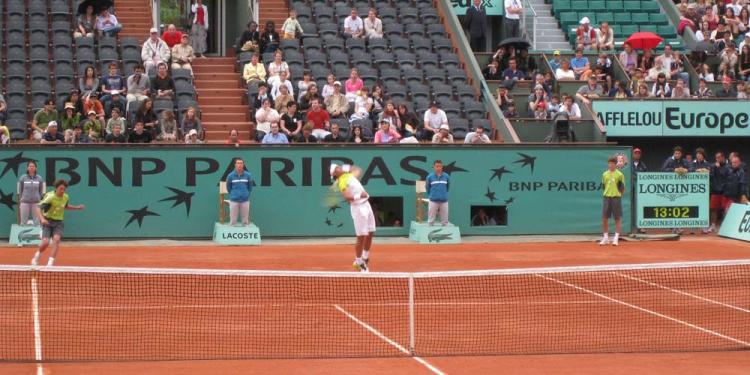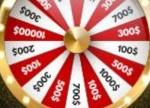A Look at the Clay Court History As the 2019 French Open Approaches
Posted: March 28, 2019
Updated: March 28, 2019
-
How an Englishman contributed to the clay court history
-
The red brick-based surface enables a longer and more creative game
-
Djokovic is the best bet on the 2019 French Open winner

No other sport faces so many different surfaces as Tennis. Over the past century, Grand Slam’s courts suffered some changes. Since then, the French Open remained the only major tournament to be played on clay. Along with a betting preview of the 2019 edition, we will take you on a brief clay court history.
In the beginning, grass exclusively covered tennis’ courts as we know them today. This is why it is the traditional surface of the sport. And, throughout most of the 20th Century, 3 Grand Slams were using grass courts. However, due to the high costs of maintenance, both the US Open and the Australia Open changed to hardcourt surfaces. But during the 1970s, they experienced clay, just like the French Open. Although the latter used sand until 1908. Nowadays, clay is mostly famous in Continental Europe and South America.
The clay court history began after a need to address climate
As online sportsbook news sites in France report, William Renshaw, a 7-time winner of Wimbledon, invented the clay court.
In the late 19th century, Renshaw was a tennis teacher in Cannes. In order to protect the grass from deteriorating under the burning sun, he decided to cover the court with a thin layer of red powder from clay pots manufactured in Vallauries. Unfortunately, this method seemed to suffer from a drainage problem. This way, the British company En Tout Cas introduced crushed brick surface in 1909. This way the court’s surface dried faster.

Eventually, as the popularity of the sport grew, the 1940s saw the predominance of hard-courts. And they are in fact not so common these days, as they are more expensive to maintain.
But clay continued to enjoy wide popularity in Europe and, in 1956, the Gallia Tennis Club in Cannes built the first clay court. It was more sophisticated than Renshaw’s amends, being designed from the beginning to tolerate better the Southern Europe climate. And a clay court evolution continued to take place through the years. Due to more sustainability, the surface is now made with a number of different substances. The red clay surface is usually made out of a combination of red brick dust, crushed white limestone, and shale, coal residues or other minerals.
In 1931, Henry Alexander Robinson, a contractor, developed a new version of the clay court in the United States. Famous for its green color, the Har-Tru is naturally made of crushed metabasalt resulting in a slightly faster and harder surface.
The clay court evolution has led to a more complete game
The red clay court is the slowest surface on the sport, as the clay grips the ball, consequently slowing it down. This allows for longer points and matches, demanding more creativity and resistance from the players.
In this way, baseliners who also use heavy topspin – as the ball bounces higher than in any other surface -, benefit from tournaments in clay. This is the case of players who have been very successful in the French Open such as Rafael Nadal, Björn Borg, Monica Seles or Justine Henin.
As mentioned above, playing on clay requires a lot more patience and more consistency in the game. But it also brings advantages to players, such as the possibility of sliding. Unlike hard surfaces, this decreases the chances of injuries.
Bet on the 2019 French Open winner
We already made our predictions for the winner of the women’s edition, but now we provide you with our preview for the ATP Tour. Rafael Nadal is the bookies’ favorite, and his style of playing will always be in his favor. Additionally to many records on the surface, the “King of Clay” has won the Grand Slam 11 times. And this year he (1.90) might pursue his 3rd title in a row.
However, the Spanish player will have to face Novak Djokovic. When he was defeated in the quarterfinals last year, he was just coming back from a year of injuries in 2017. But now, Djokovic is again in shape and already won the Australian Open. And according to our predictions, he is very likely to achieve a career Grand Slam this year. In this way, his odds are 2.75 at Bet365 Sportsbook.

Online sportsbooks in France are positive about Dominic Thiem. The Austrian player has just won his first ATP Masters 1000, by beating Roger Federer in the final of Indian Wells. Last year he was also a runner-up in the French Open and now he (11.00) might be prepared to finally win his first Grand Slam.
With lower odds is Alexander Zverev. But the young player has affirmed himself on clay, winning two Masters on the surface. So he might surprise at this year’s French Open. His odds are 13.00 at Bet365 Sportsbook.
Despite his odds, we still think gambler should consider Roger Federer. He certainly doesn’t benefit from the slow pace of the clay court, but he has shown his ability and won the Grand Slam once. After his 3-year absence, he (29.00) will be looking to repeat the victory again.












